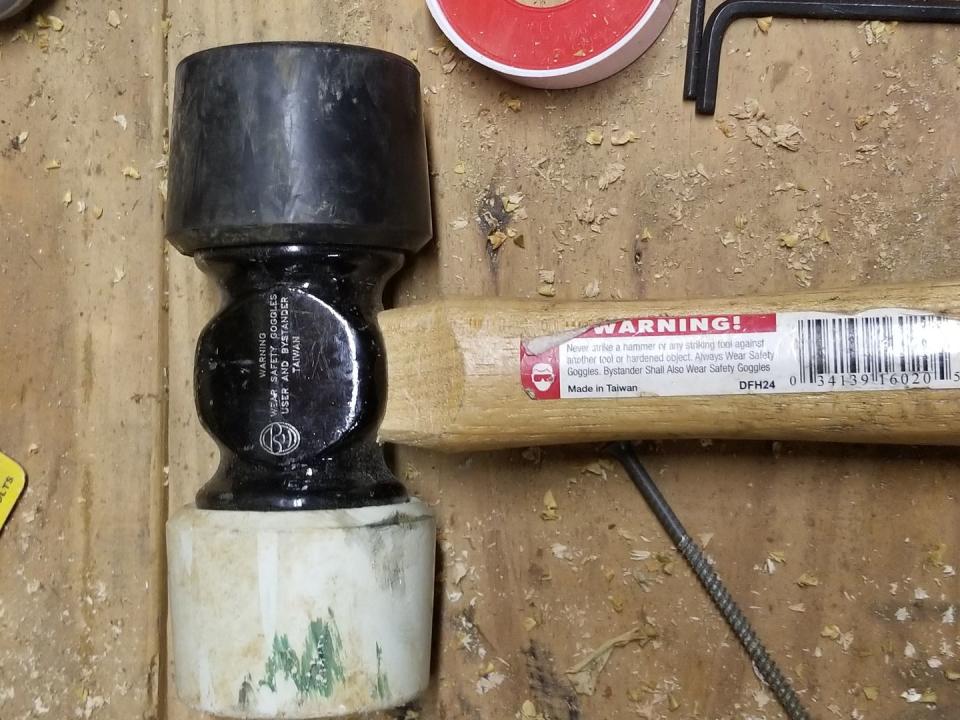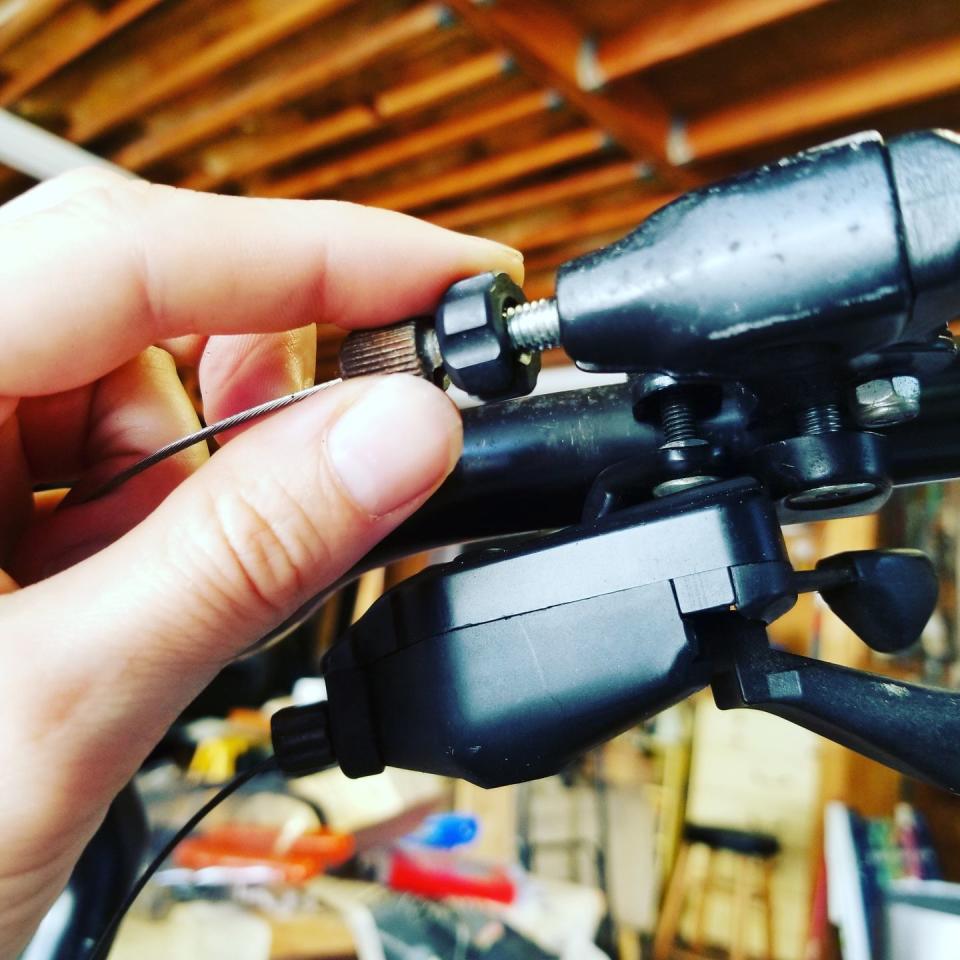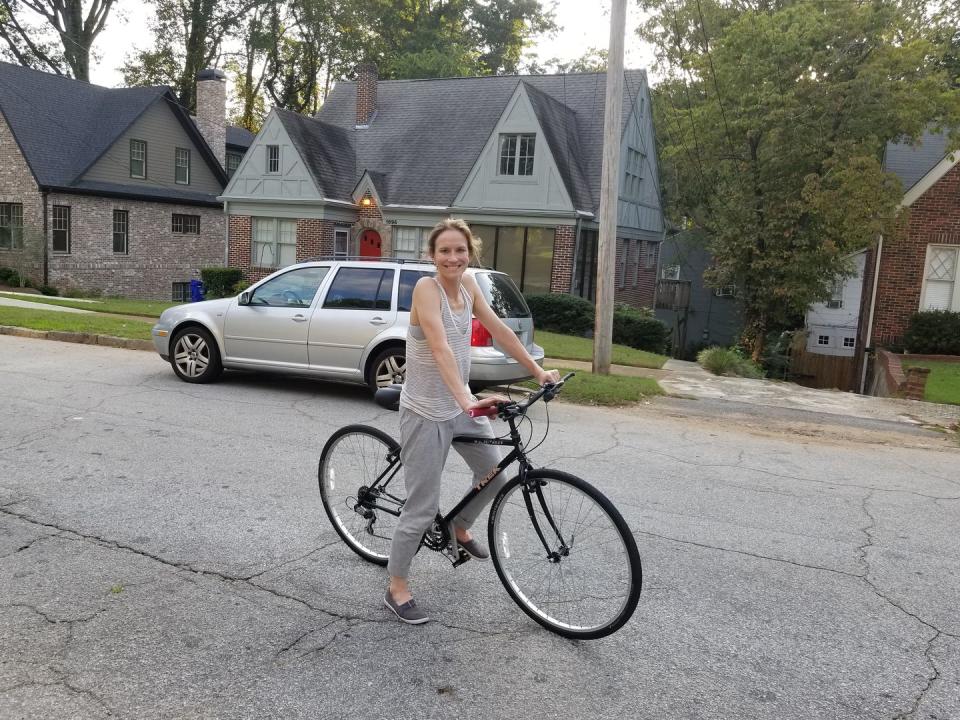Rebuilding My Bike Nearly Broke Me—But I Learned These 5 Rules of Bike Repair

It took a lot to get the 7-speed SunTour freewheel off of my 26-year-old Trek 720 Multitrack. A lot of sweat, a can of PB B’laster, and eventually, a hammer. When it finally came loose, ball bearings exploded across the floor of my parents’ garage, disappearing under shelves and into dusty, spiderwebby corners. It was going to be impossible to retrieve them, but surely that wouldn’t be a problem. I’d just buy more, I thought. That should be easy enough.
Three hours and four stores later, it felt like no one in all of Atlanta wanted to sell me ball bearings. It was likely the case that God himself didn’t want me to have ball bearings. Ball bearings, it appeared, were the sort of thing that everyone agreed would be easy to find-they’re just small metal balls-and yet no one stocked. Sitting in the parking lot of yet another hardware store (“Maybe you should try Home Depot?”), I finally cracked. I put my head down on the steering wheel of my Honda Fit and cried.
When I started the project at the beginning of the summer, it had seemed easy enough. I was new to cycling, and my bike repair skills were limited to changing brake pads. At Dirty Kanza in June, I bent my derailleur hanger in a crash and waited in line for 30 minutes for help at a check point, fuming as time passed and my position in the race eroded. When I got back to Atlanta, high on the joy of the DK finish line, I came up with a great idea: I’d teach myself bike repair by fixing up my first real bike, the black chromoly Trek 720 that my parents bought me for my 11th birthday. Soon, I thought, I’d never again be sidelined by a repair.
The Tools I Can't Live Without

Why did I still have the 26-year-old bike? I grew up outside Atlanta, where the suburbs became the country. There weren't other kids in my neighborhood, and so I spent hours riding my bike every day. My dad taught me to change tires and to adjust my seat. I rode around with a flathead screwdriver in my pocket as a combo tire lever and weapon against potential child molesters.
I rode this bike from the time until I graduated from college. I did the Bike Ride Across Georgia on this bike, with my dad and brother. I rode to class when I was in undergrad. Then I graduated, moved overseas, and stopped riding while the Trek hung in my parents’ garage. A running injury brought me back to the bike to cross-train, and now, after 10 weeks of wrenching, the bike that brought me so much joy had me in tears.
What had seemed so simple-take the Trek apart, replace anything that was worn out, and put it back together-had taken weeks longer than I’d expected. Nothing had been easy. I’d spent hours searching the internet for diagrams for the ancient SunTour components. I’d stabbed myself with wire cutters. I’d acquired an extremely large collection of tools that are useless on modern bikes. (Let me know if you need to borrow a Kawasaki ring wrench.)

I thought this was the last day of the project. I just needed to put the freewheel back on and replace the chain. But unless I could get my hands on a bunch of tiny steel balls, it wasn’t happening.
Learning experiences are rarely fun without consequence, and my Trek project was no exception. As I write this, I just rode the Trek for the first time in 15 years (good thing I stopped growing at 11). I learned more this summer than I can easily summarize, like why a vise grip was definitely not the right tool for that particular job. But the most important thing was this: If you love bikes, you should learn to fix bikes. It wasn’t easy, but it was worth the frustration, the tears, and the wire-cutter injuries, because my bikes are now no longer mechanical mysteries.
It only has to be mostly right.
Lots of people love to wax on about how the bicycle is a simple and beautiful machine. Those people are also likely to have strong opinions about Campagnolo and I suspect that most of them learned bike repair in childhood, possibly from some sort of bearded guy who handbuilt frames. Also, they’re full of crap. The bicycle is, generally, a logical machine, but there are approximately 1.5 million spacers, nuts, and ball bearings in your average bicycle and if you fully disassemble a bike, at some point they will be all over your garage and you will lose some of them. The awesome thing is that the bike will still work even if you mess up some of that stuff in most cases. For example, the Trek is fully reassembled, but there are four nuts sitting on my work table still. I do not know where they go. They go somewhere. But the bike works, so I’m going to try not to worry.
Get a bike shop that will give you free grease.
When I first started cycling, I thought that all little bike shops were good bike shops. In my mind, they were sort of like specialty butcher shops, or the hardware store: anybody who worked at a bike shop was probably highly skilled, super into bikes, and excited to talk about bikes with me, an enthusiastic beginner. I was quickly disabused of that. At the first shop I went to, the mechanic was perfectly happy to fix the bike for me, but warned me against doing any of it myself. It was going to be hard, he warned, and probably a waste of my time. They could do a full overhaul for $250, wouldn’t that be easier? Another bike shop employee didn’t know the difference between a freewheel and a cassette (in fact, he insisted there wasn’t one). I know bike shops don’t get paid to explain bike repair to newbies, but once I found a mechanic who was willing to field my endless and random questions, he had my loyalty for life. He even gave me free grease one time. I never thought I’d view a bag of grease as a sign of great customer-service, but that was before I started working on bikes.

Sometimes you just need a hammer.
That freewheel I mentioned was a bear to remove. Even the holy and mighty ParkTool Blue Book doesn’t have instructions on removing a 26-year-old SunTour 4-notch freewheel. There are a lot of websites out there on vintage bike repair, but most of them are written for the kind of people who already know what splines are. I still don’t know what splines are. However, I did finally manage to get the right tool and find instructions. Unfortunately, even after about six applications of solvent, the freewheel wasn’t moving. Finally, my dad put a piece of PVC over the handle of the remover tool, handed me a sledgehammer and stood back. Et voila: ball bearings everywhere. My bike Twitter friend Eric called this “impact maintenance,” and it is both effective and remarkably satisfying.
You can learn anything if you’re willing to admit you know nothing.
I’m not in the business of admitting ignorance. I’m a lawyer. My job is to know things. But I knew I didn’t know a thing about fixing bikes. In addition to my frequent trips to the bike shop, when I got stuck, I took pictures of the bike and posted them on Twitter and Instagram. (Typical caption: “What is this and do I need to replace it?”) Bike Twitter talked me through disassembling the frame, replacing the bottom bracket, and my long battle with the freewheel. Cheerful arguments over the best kind of rim tape broke out in my mentions. Both virtually and in real life, people were remarkably generous with their time once I admitted the extent of my cluelessness.
In fact, it was Bike Twitter that solved my ball-bearing crisis: someone pointed out that the bearings in the old bottom bracket were likely the same size as the bearings I needed for the freewheel. I bolted home, salvaged the bottom bracket from the trash, and dumped out the bearings. Some of them were a bit worse for the wear, but there were plenty of them. After a good clean-up and a strategic application of my free grease, I got the freewheel back on.

It always takes longer than you think
Of course, I didn’t finish that day. When I put the wheel back on the bike, the end of the frame was sitting flush against the smallest sprocket. I was clearly missing a spacer and said spacer was nowhere to be found. It took another week, another trip to the bike shop. But the next Sunday, I rolled down the street on that black Trek for the first time in 15 years. For just a minute, I didn’t feel like a 37-year-old woman with her share of disappointments. I felt like a gangly eleven-year-old girl again, not yet grown into my height, thrilled just to be riding bikes, and eager for two-wheeled adventures. I felt perfectly, beautifully free.
Then I tried to turn, realized I hadn’t properly tightened the headset, and promptly crashed into a curb in front of my neighbors, my parents, and the family dog. The bleeding was minimal, although it looks like the scrape on my ankle is probably going to scar. That’s okay, actually. It’ll go with the scar on elbow from the last time I fell off this bike, which was when I tried to ride down a big hill with my eyes closed and crashed into my friend Alicia’s yard sometime during the second Clinton administration. A little bit of blood, and ten weeks of time, doesn’t seem like a high price to pay to have that feeling of freedom again.

('You Might Also Like',)

